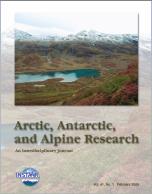There have been only a few truly integrated quantitative studies on sediment budgets and relief development in cold environments. For a combined quantitative investigation of the relevant denudative slope processes and stream work in the 7 km2 catchment Hrafndalur, situated in a rhyolite area in the northern part of the Icelandic Eastern Fjords region (Austfirðir), information was collected on the absolute and relative importance of the different denudative processes. Integration of the six-year monitoring program with the analysis of Holocene storage elements using geophysical techniques allows estimates on Holocene process intensities in addition to the measured present-day sedimentary transfers. With respect to mass transfers, fluvial suspended sediment plus bed-load transport is most relevant and is followed by fluvial solute transport, rock and boulder falls, chemical slope denudation, mechanical fluvial slope denudation (slope wash), creep processes, avalanches, debris flows, translational slides, and deflation. Due to comparably high mechanical weathering and sedimentary transfer rates, postglacial modification of the Pleistocene glacially formed landscape is clearly more advanced than in the extended basalt areas of Austfirðir. Postglacial relief development is characterized by a valley widening due to the active retreat of rock walls and the formation of extended talus cones coupled with channel systems.
How to translate text using browser tools
1 February 2009
Sediment Budget and Relief Development in Hrafndalur, Subarctic Oceanic Eastern Iceland
Achim A. Beylich,
Christof Kneisel





